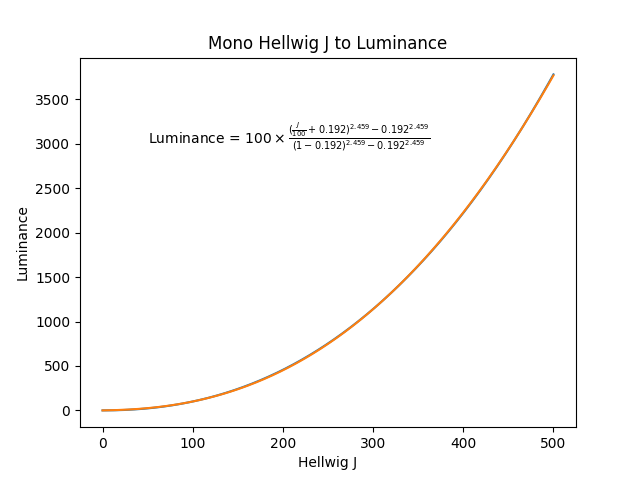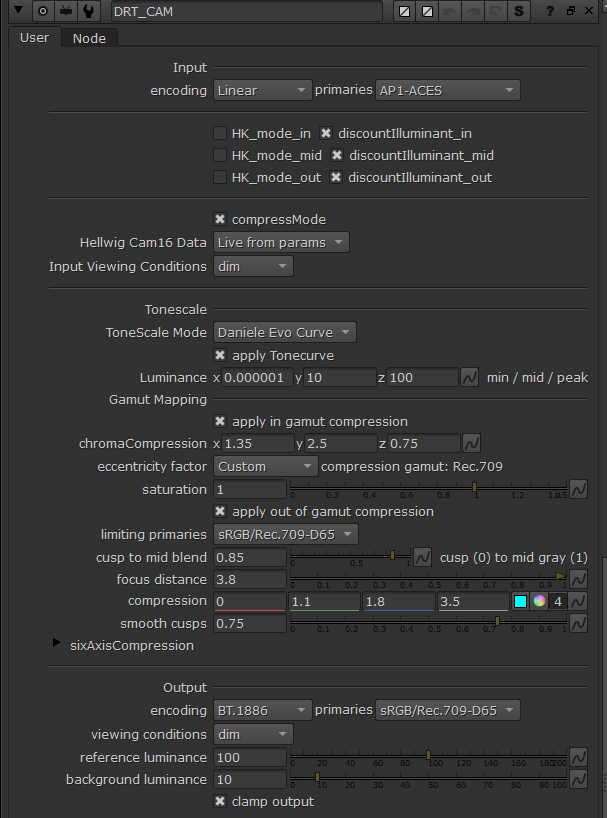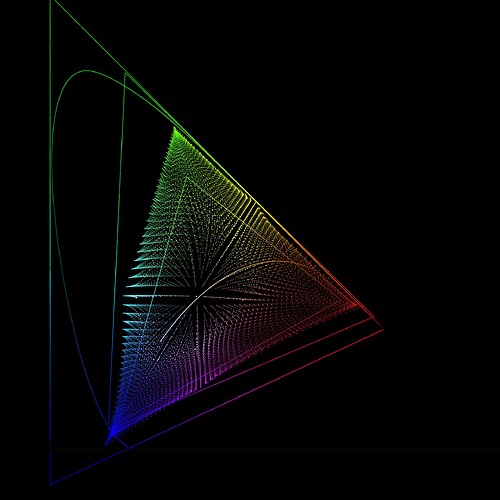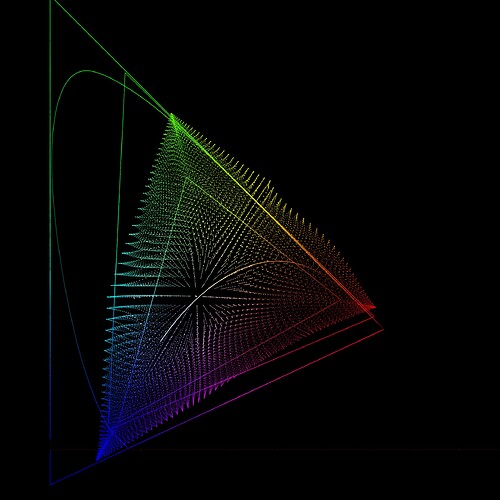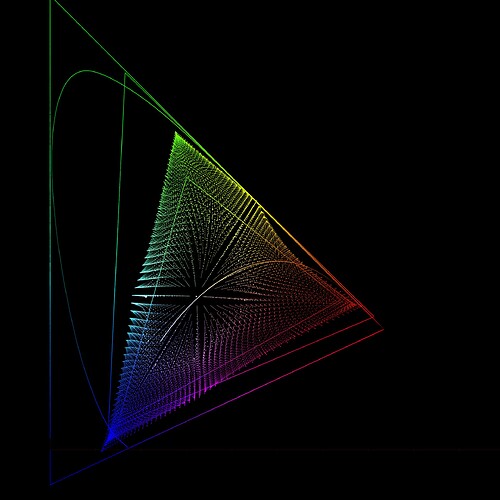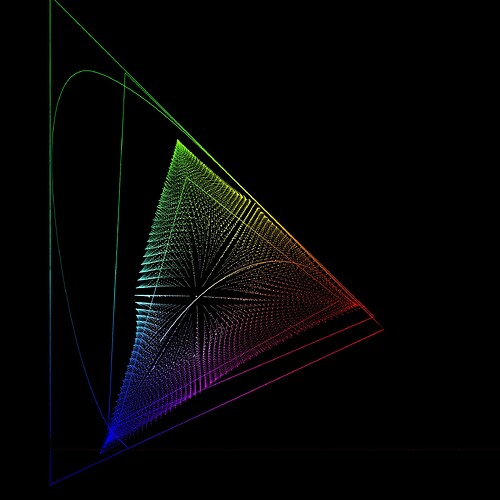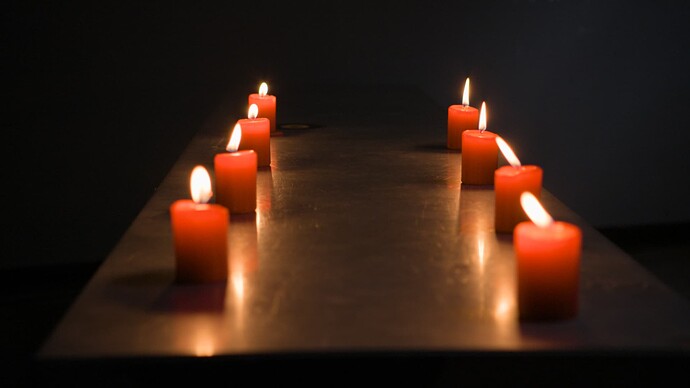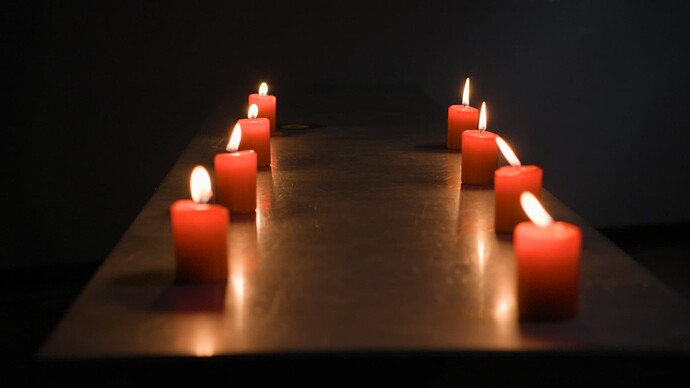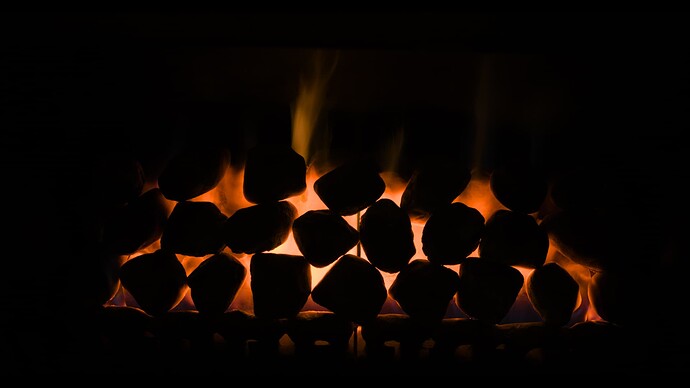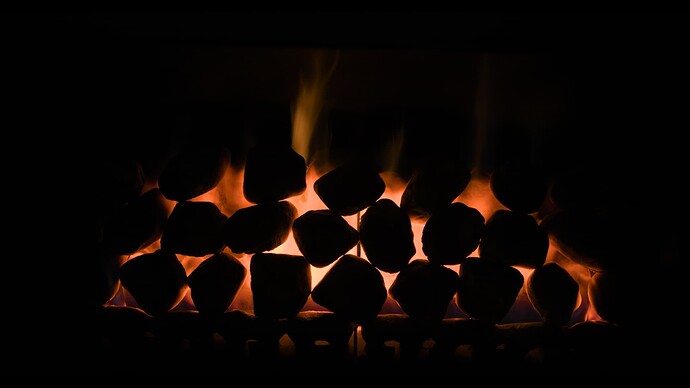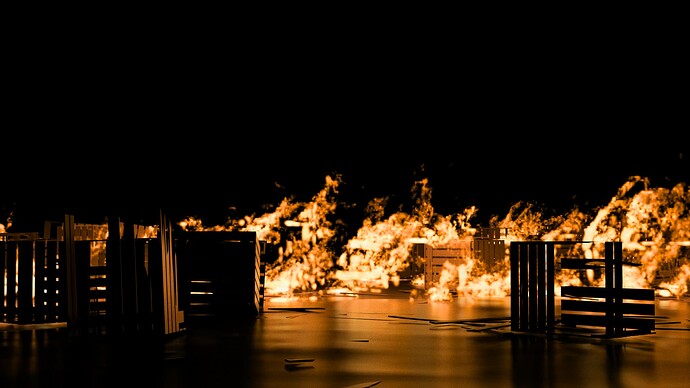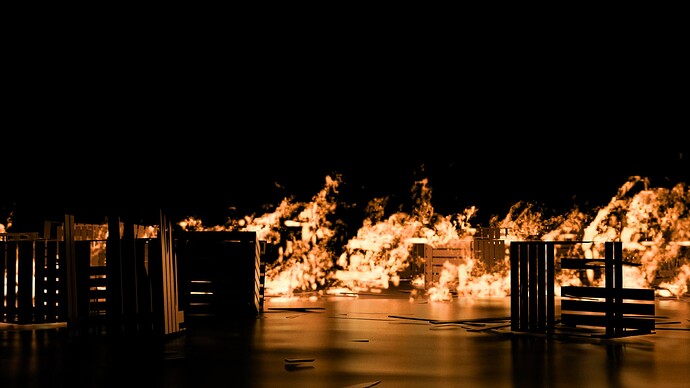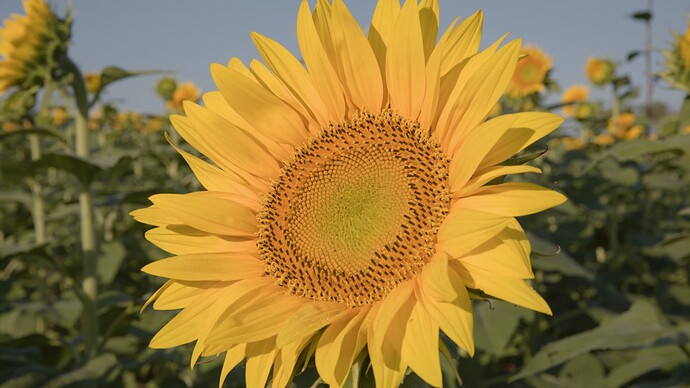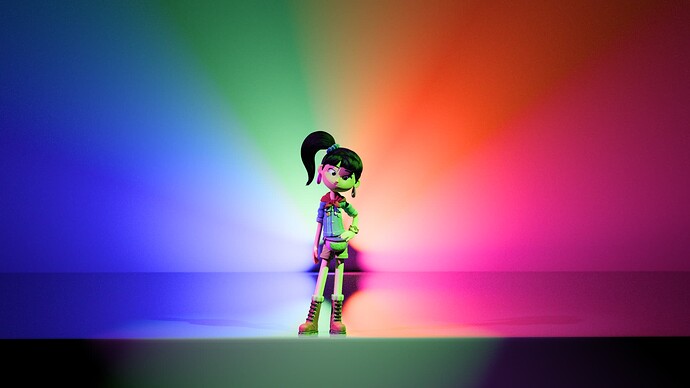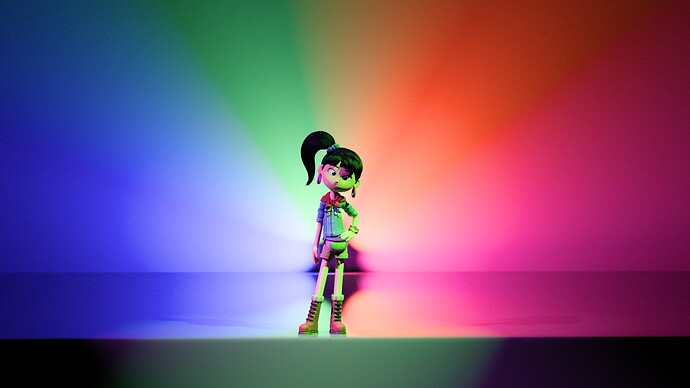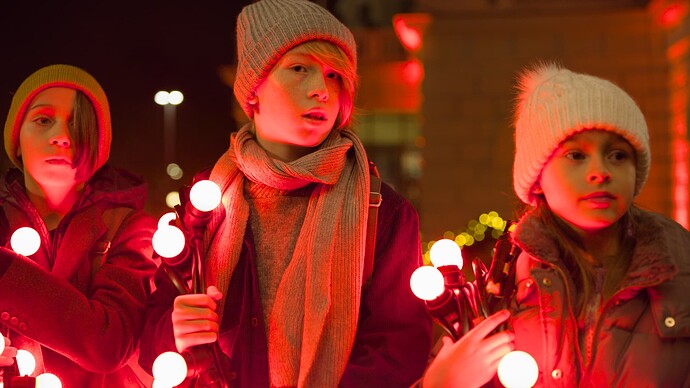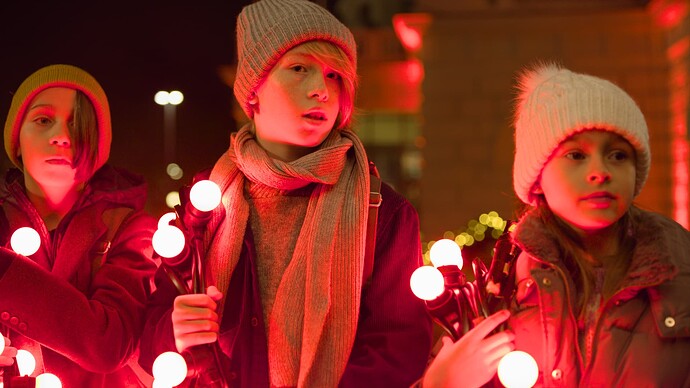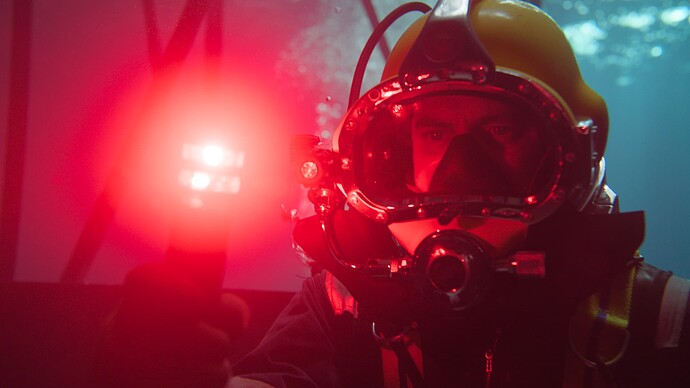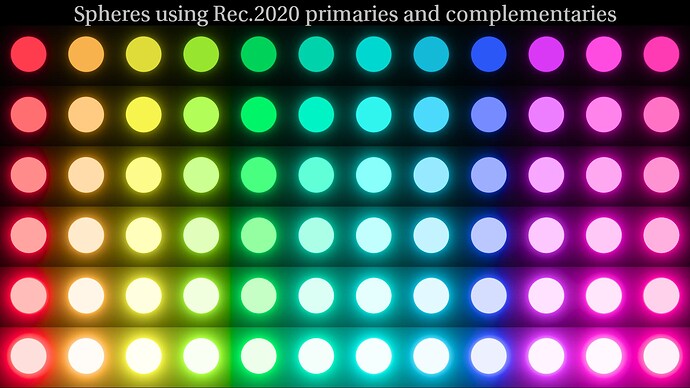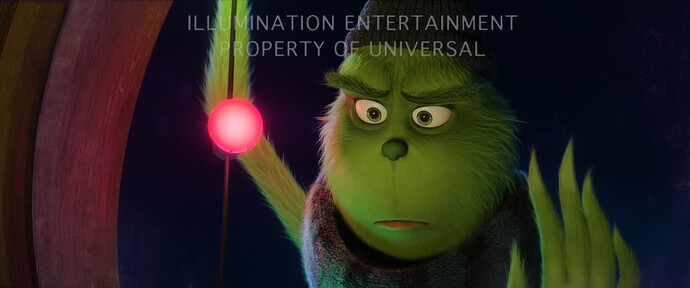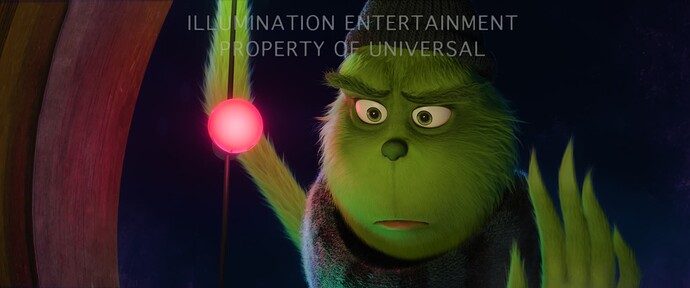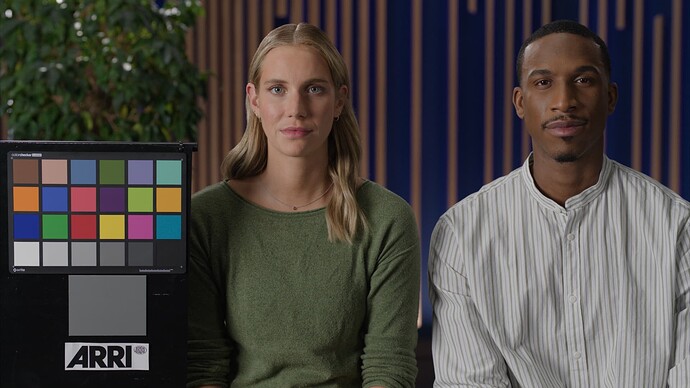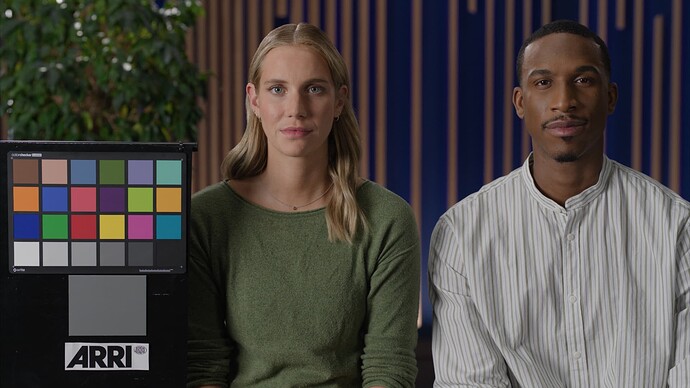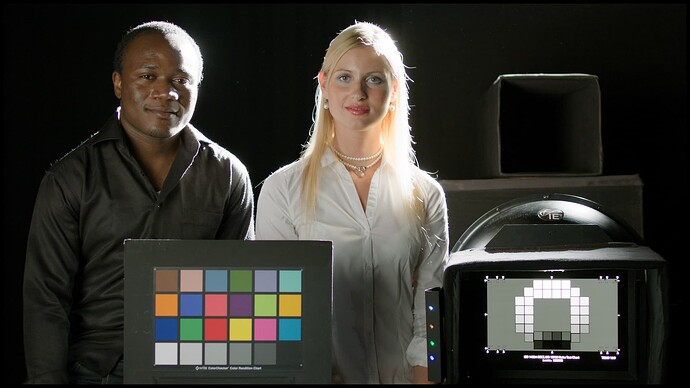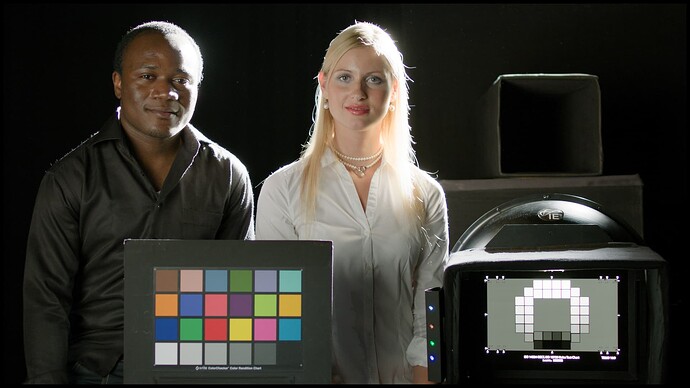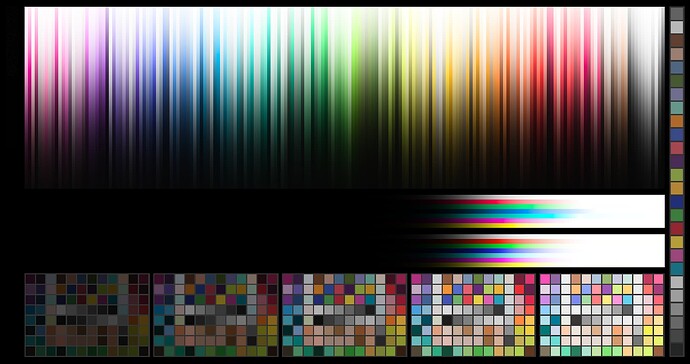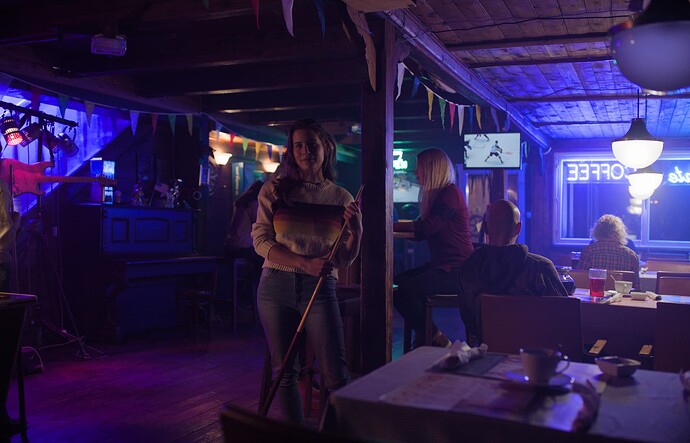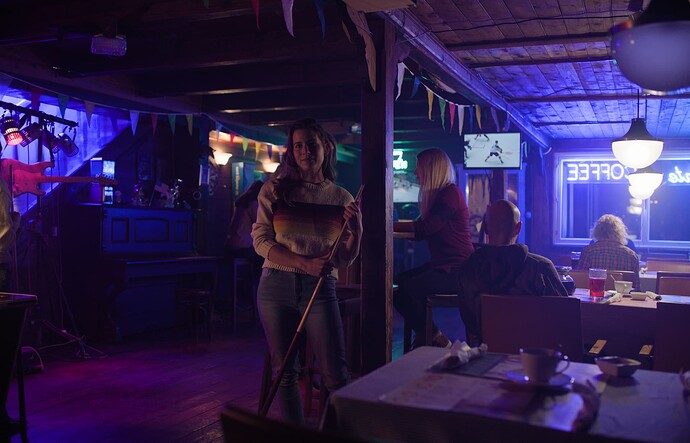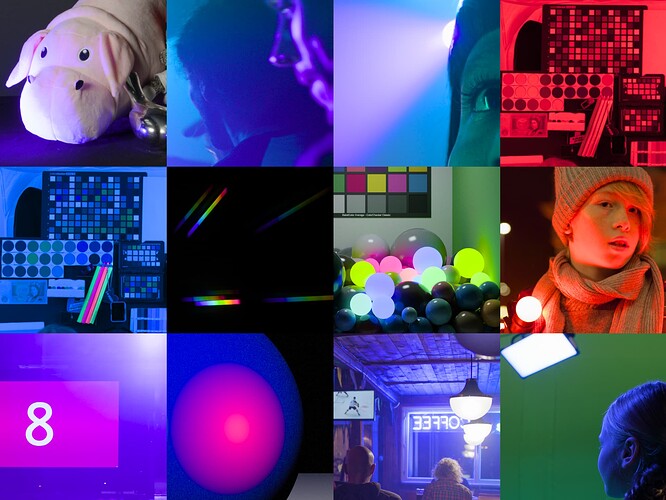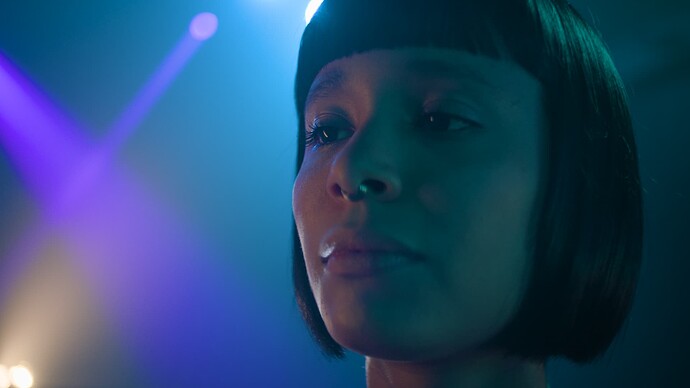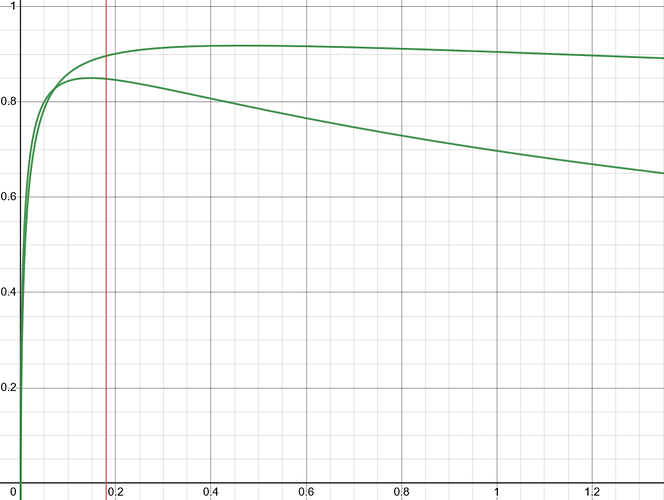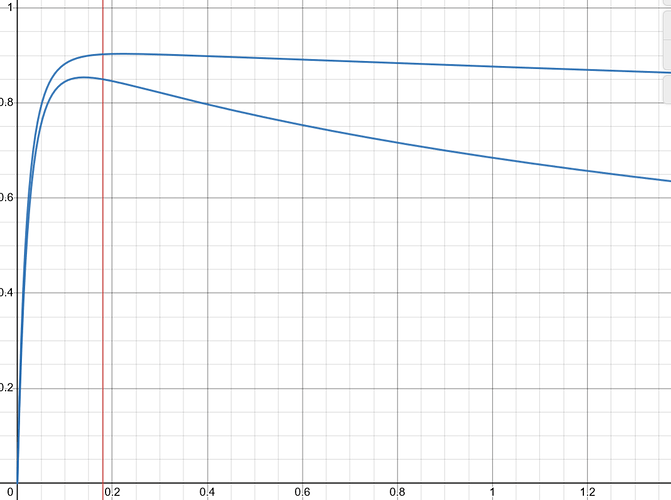===========================================================
Purpose - to compare HDR and SDR for version 032 ACES2 ODT
Systems A and B described at end.
As an initial check, both systems were compared using SDR for the Rec709 v032 and were found to be closely identical for all images. Then both were compared using HDR for the rec2100(rec709sim) v032 and were found to be closely identical for all images. And the same done with rec2100(P3D65 540nit) with similar results.
For the following comparison duplicate frames were made with rec2100(rec709sim), rec2100(P3D65 540nit), and rec2100(P3D65 1000nit) and viewed simultaneously using split-screen with Computer A. Computer B was set to rec709 and viewed those images that way. So each frame had four views displayed simultaneously (3 in HDR and 1 in SDR) on two screens and evaluated.
Also as a check, rec2100(rec709sim) and rec2100(P3D65 540nit) were run on Computer B in HDR and rec709 on Computer A in SDR. This gave identical results to that above.
=============
Observations:
76 images were compared from the ACES2 frame samples.
Overall SDR and sim matched well unless noted otherwise.
In general HDR had more contrast as expected, but also showed more saturation with the 540nit group tending to have the most saturation, too much at times (as in 0064.)
Neon reds looked to be weak and pink in SDR.
In particular frame 0012 note the red letters of the Hollywood Museum sign (is this even the correct red?)… and red Christmas goes orange (0060.)
Found some clipping in 0017 in SDR.
Some had issues with blues see 0033, 0035, 0043 and 0067 below.
There looked to be more green in HDR of 0041.
Above are some summaries of the notes listed for each frame below, a blank note means SDR and HDR looked close or as expected.
001
002
003 neon red in HDR is neon pink in SDR and sim
004 SDR and sim match and HDR looks a bit more red more sat
005 SDR and sim match and skin looks better than HDR which might be more red
006
007 SDR and sim match with SDR a bit nicer and HDR too red/orange
008 here SDR and sim match and look less saturated than HDR
009
0010 HDR orange a bit more saturated
0011
0012 HDR has better red in signs which looks a bit orange and lower sat in SDR and sim
0013 reds all close
0014
0015 the sim cyan looked a bit weaker otherwise SRD was a bit greener cyan than HDR
0016 SDR and sim match but red neon is more pink and green neon a bit weaker than HDR
0017 SDR and sim weaker or less sat than HDR plus SDR has grey patch in sun (clipping?)
0018 HDR looks to have more sat
0019
0020
0021 HDR has a bit more sat
0022
0023
0024
0025 Red neon in HDR is pink in SDR and sim
0026 HDR has more sat
0027
0028
0029
0030 bananas and melon look weak in SDR and sim and more sat in HDR
0031 rather than SDR and sim looking weak HDR might be more sat
0032 rather than SDR and sim looking weak HDR might be more sat & Red neon different
0033 SDR and sim look grey (Sim more so) might be sat difference in blues
0034
0035 SDR and HDR match better than sim which looks grey or has magenta in blues
0036
0037
0038 neon seems to match better in this frame
0039
0040
0041 more green in HDR
0042 HDR has more sat
0043 blue in upper left sky of sim not as blue as others
0044 SDR and sim match HDR has more sat and neon name on building different (more orange than pink)
0045
0046 blues differ in all three
0047 SDR and sim look weak next to HDR (just not a lower dynamic scene)
0048 SDR and sim look weak next to HDR (just not a lower dynamic scene)
0049
0050
0051 is more contrast or luminance of HDR adding sat?
0052 is more contrast or luminance of HDR adding sat?
0053
0054
0055
0056 Red neon in signs of HDR goes pink in SDR and sim
0057 amazing close match, however screen seems shifted to purple
0058 all match with the same sat/contrast differences in skin
0059 all look orange and maybe not enough red for what has been called red Christmas, but they match
0060
0061
0062
0063 the red, blue green only work in HDR, note that the chart looks a bit weak in SDR and sim
0064 HDR looks too much sat, enough to not look real
0065 SDR and sim match but tail lights differ from HDR
0066
0067 I think the shirt is supposed to be powder blue which looks a bit magenta in HDR
0068
0069 immediately noticeable, the ferris wheel lights differ between HDR and SDR, sim
0070
0071 again the red neon
0072
0073
0074
0075
0076 again HDR is too much
==============================
Purpose - to check inverse IDT
A first node with ACES transform ODT v032
A second single node with ACES transform Input as inverse032 and Output as v032
checked for Rec.709, Rec.2100(709sim), and Rec2100(P3D65 1000nit)
Note that if the order of the nodes is reversed all fail without question.
Instead of listing a bunch of notes (available if desired) will just say that the inverse does not look to work well.
==========
Equipment:
Computer A - for HDR and SDR
AMD Threadripper 1950X on Asrock Fatal1ty X399
Windows 10 Pro 64-bit 21H2
AMD Radeon Pro WX 8200
BMD Decklink 4K Extreme 12G
LG C8PUA OLED TV calibrated & checked with Xrite i1Display Pro
Davinci Resolve 18.1.4 build 9
Computer B - for HDR and SDR
Apple Ipad Pro M2 12.9"
DaVince Resolve for iPad (latest)
Note: on the iPad for some reason files cannot be placed into the directory for ACES transforms so DCTL were used instead of ACES Transforms by commenting out the first line of code.
